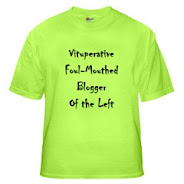Plowing with steam:
The Power Of Troubleshooting
28 minutes ago
A blog by a "sucker" and a "loser" who served her country in the Navy.
If you're one of the Covidiots who believe that COVID-19 is "just the flu",
that the 2020 election was stolen, or
especially if you supported the 1/6/21 insurrection,
leave now.
Slava Ukraini!







European Union laws require you to give European Union visitors information about cookies used on your blog. In many cases, these laws also require you to obtain consent.You're here, you've consented. If you don't like it, go read some other goddamn blog. It's not as if you're paying me.
5 comments:
Gosh, that's pretty. And look at that soil!
When I was a kid in Nebraska, maybe 12 years old, there was an exhibition in the town of Bruno where they demonstrated these machines in 1967 for the centennial. That big shiny spinning wheel you see next to the operator was used to hook up a threshing machine with a canvas belt. They tore up the field that they put them down on next to the rail tracks. The drive wheels were all steel (or iron I guess) and I was told you couldn't drive them on the roads at that time as they would destroy them. The operators would load them on the trains and go from town to town back in the day, moving from farm to farm on the old dirt/gravel roads before the roads were paved. They could burn coal, wood or buffalo chips and were used back then to break up the prairie for the settlers after the Homestead Act of 1862. My great great grandparents live in a sod house at this time, they moved out from New York via Chicago from Czechoslovakia. The village I lived in still spoke Czech when I was growing up, but all I learned were a few cuss words, and how to say good night to Grandma.
The video is fake. Dirt is red.
Bob Page
Fayetteville, Georgia
j/k
When men were men! And little furry creatures....
Wonder what happens if the belt that drives the governor flyballs slips/snaps. And how many rows before you have to take on more water and coal. HOw they kept the beast supplied in real use. Fuel yes, but water in quantity on the prarie?
Of course, the alternative wasn't exactly a cake walk
http://4.bp.blogspot.com/-HW-pGwgtgWc/Ubue3muVH1I/AAAAAAAAOlg/bxUxubIDEdk/s1600/BLOG-Darwin-Smith-color.jpg
"Although there were many attempts at steam plowing (and some partial successes during those years, with 13 patents granted in 1871 alone), 1876, generally considered the birth date of the steerable steam traction engine in the U.S., was a turning point in the evolution of the development of the steam plow. A steerable steam traction engine provided a new means for working the land, and the advent of the steam traction engine her alded the use of tractor plows. The multiple gangs -- large, heavy plows intended for use with steam traction engines -- were among the first types produced, and these plows, ranging in size from six to 14 bottoms, soon met with farmer approval and broke many sections of Western prairie. The 1893 Peerless steam plowing outfit, for example, was guaranteed to plow as much soil in the same time and to an equal depth as could be done with six, three-horse teams -- provided, as a Geiser catalog stipulated, the soil was "firm enough to carry the engine, free from stumps and rocks, not too wet, having no grades over 1 foot rise in 10 and good fuel and water are provided."...
farmcollector.com
Couldn't find a source of water requirements, but did find some light reading on fuel:
http://wiki.vintagemachinery.org/The-Thresher-s-Steam-Traction-Engine-Guide-Volume-1-Chapter-4.ashx
Post a Comment